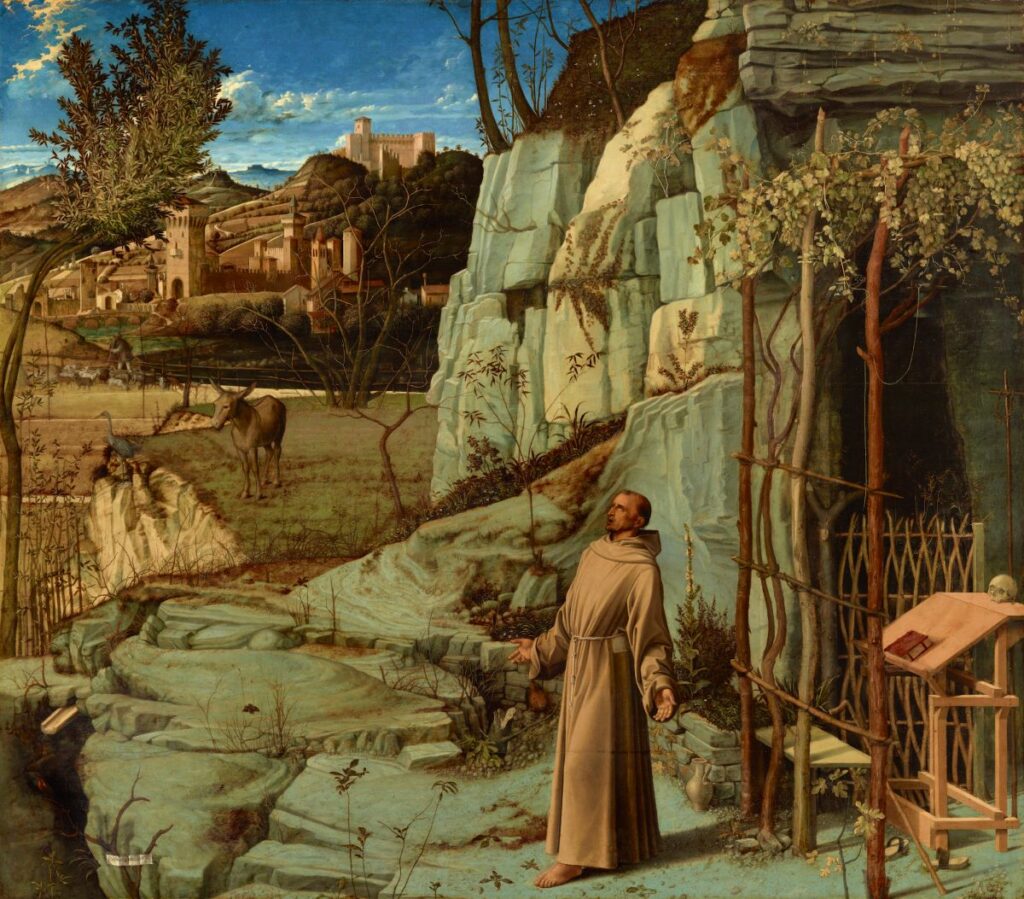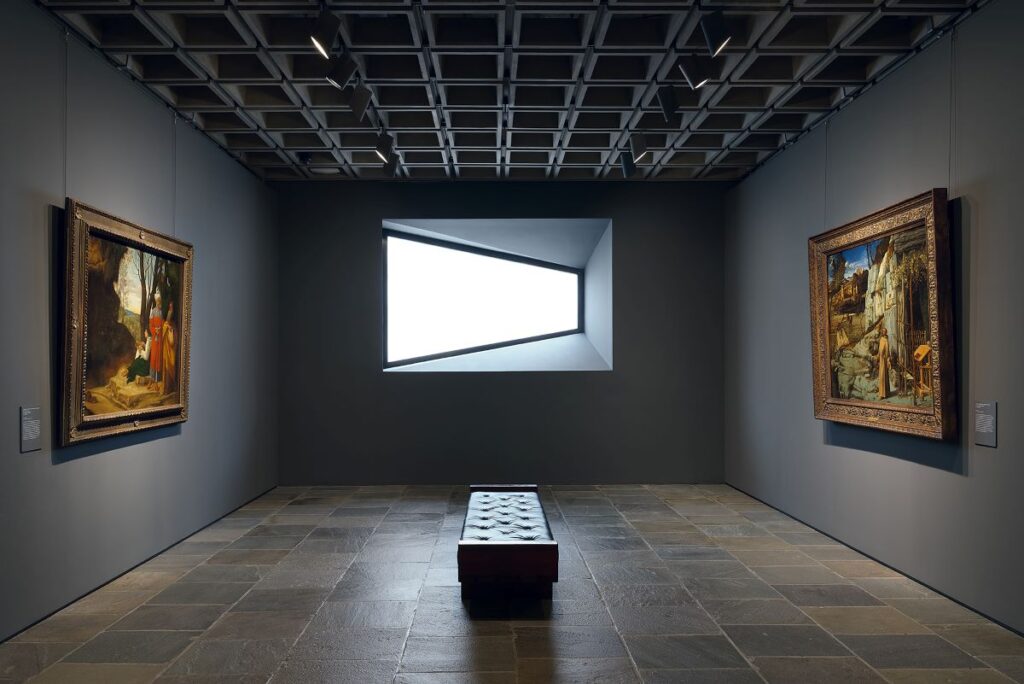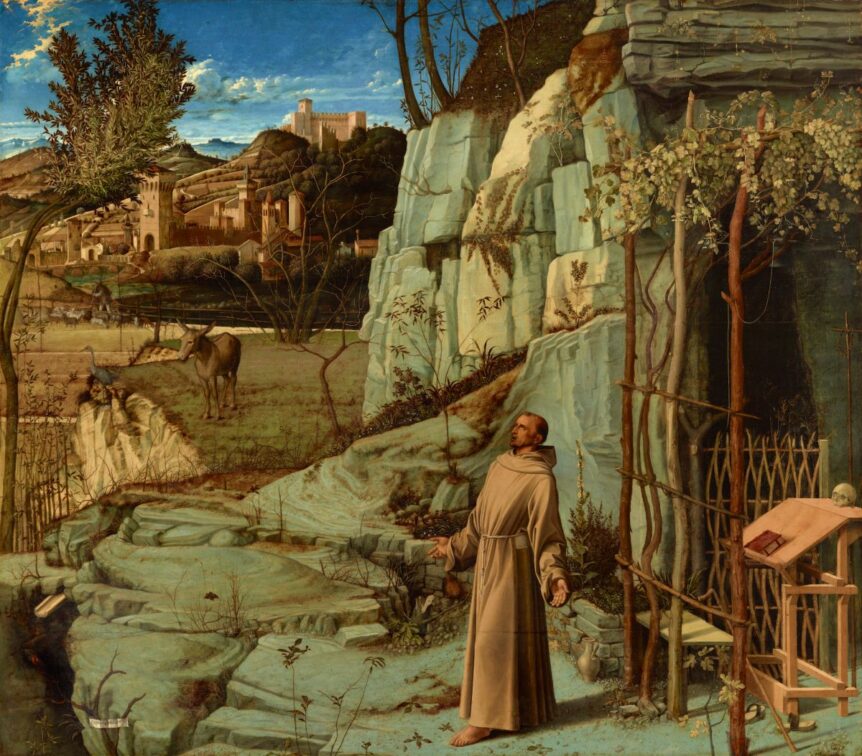
Around the year 1570, two paintings hung together in the home of the Venetian merchant-nobleman Taddeo Contarini, considered one of the first European art collectors (in the sense we use the term today: someone who collects art because he enjoys it). One thing led to another and some four hundred-odd years later, one of the paintings—Giorgione’s Three Philosophers—is in the collection of the Kunsthistorisches Museum in Vienna, while the other—Giovanni Bellini’s St. Francis in the Desert—is held by the Frick Collection in New York. Each artwork is regarded as one of the revered gems of its respective collection, and, given that, it was seen as something of a coup that the Frick’s chief curator, Xavier Salomon, was able to bring the two paintings together again in an exhibition at the Frick Madison titled Bellini and Giorgione in the House of Taddeo Contarini.

(c. 1477–1510), c. 1508–1509. Kunsthistorisches Museum, Vienna; photograph courtesy of KHM-Museumsverband.
St. Francis in the Desert depicts the saint in a state of grace as he communes with nature while standing in a finely detailed rocky landscape, complete with rickety hermitage wedged beneath an outcropping. It is thought of as one of the great devotional paintings in the Western canon, and perhaps the greatest depiction of sainthood.
The Giorgione, meantime, is a bit of a puzzlement. It might be a spiritual painting, but it’s unclear who the three philosophers are, where they are, and what they’re doing there. Some think that ambiguity is the point. Art critic Blake Gopnik has suggested that The Three Philosophers is emblematic of a watershed moment in European art: the juncture when art stopped being something a viewer drew inspiration from, and instead put thought into. The two paintings together, he wrote in the New York Times, represent “the peculiar moment, in Northern Italy in the decades around 1500, when marveling, pondering, soaking and reveling—taking pleasure, of one kind or another—became the most natural things to do in front of certain objects. Those are the kinds of objects—of art objects—we now keep and contemplate in museums.”
The Frick has made a perfect space for such contemplation in its temporary home on Madison Avenue in the former Whitney Museum of American Art. The two paintings are displayed by themselves in a small chapel-like gallery punctuated by one of architect Marcel Breuer’s distinctive angled windows. It’s a serene, meditative place that—whatever conclusions you reach about the two Old Masters—makes the visitor feel blessed to have such art to enjoy.

Bellini and Giorgione in the House of Taddeo Contarini • Frick Madison • to February 4 • frick.org

